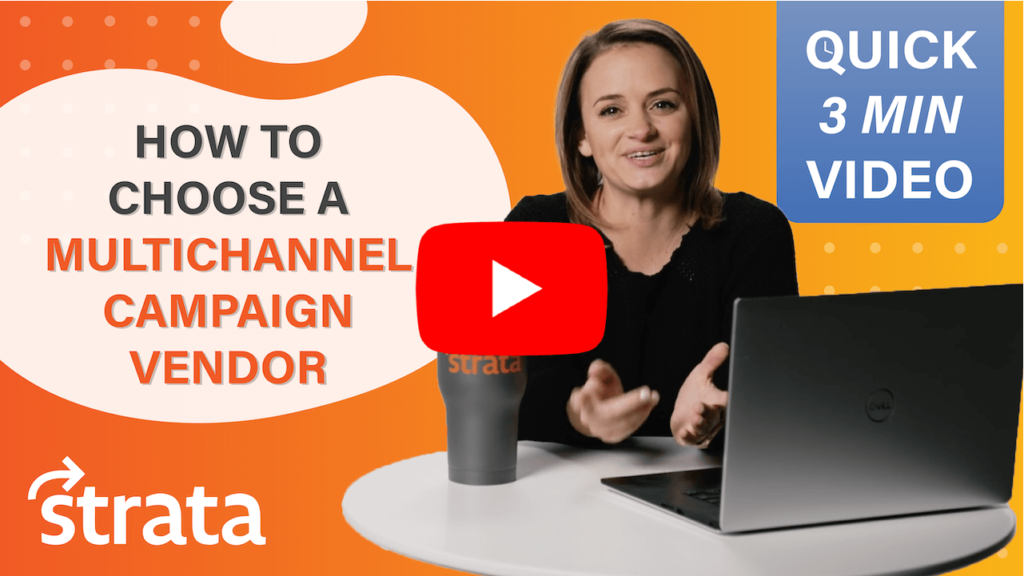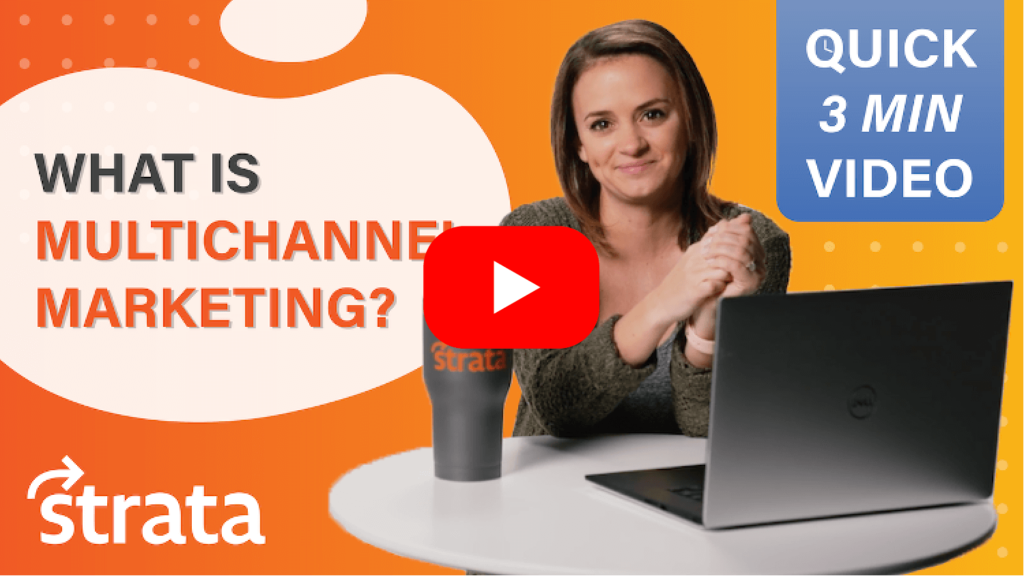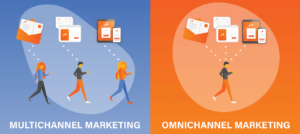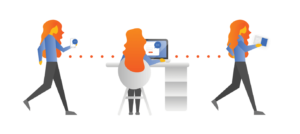How to Take Advantage of These
Tiny Lapses of Time
In today’s digital world, whether we realize it or not, we’re surrounded by buzzwords. As we evolve and try to keep up with the newest technology and trends, these buzzwords continue to evolve as well. These terms can be intimidating if you’re new to the digital marketing realm. However, they’re usually simply better ways to understand digital strategies, tactics, and optimizations available to your company. The more comfortable you get with buzzwords, the more involved your company can be with this ever-changing digital world, especially over your competitors. In this first blog of the “Buzzword Alert” series, we’ll be breaking down a very popular buzzword – the “micro-moment.”
Micro-Moments – What Are They?
“I want it NOW” is what today’s buyers are saying during their buying journey. They want immediate gratification, and they’re making decisions faster than ever before. This moment of instant need is called a “micro-moment”; the moment of intention when a consumer turns to their device to act on a need or want. Micro-moments are intent-rich moments when decisions are made and preferences are shaped. In these specific moments, consumer expectations are higher than ever. Whether they’re looking to learn something, do something, discover, watch, or buy, they want to act in that exact moment. Since consumers are never too far from their devices and can find just about anything by the click of a button (91% of people use their mobile device to research information in the middle of a task), micro-moments are a game changer for many companies.
Why is it Beneficial to Know About These Moments?
Like we said, it’s so easy for consumers to quickly find something on their phones, giving your company the opportunity to utilize keyword research tools and social listening to help better understand where, when, and how they’re making purchasing decisions. These tactics will allow you to better optimize your products and services in real time based on your customer’s needs. And ultimately, this strategy will put you in a great spot (over your competitors) to offer more personalized content for your customers. If your company’s site pops up at the right moment and offers a buyer what they want, your brand’s performed a successful customer engagement. Maybe they’ll bookmark your page for later, send a link in a text message, watch a video, or – the end goal – buy your product.
How to Effectively Show Up in These Moments
Once you understand when and where your current and potential customers are showing up, make sure you are as well. The best way to show up and present your brand in these moments is to strategize being responsive and supportive. It’s one thing to make yourself available, but another to know how and what works best for your audience. Whether this is through a chat box, pop-up ad, or video, create a strategy that works across multiple channels so you don’t miss any potential customers. Usually, the more places you are, the better. Of online consumers, 69% agree that the quality, timing, and/or relevance of a company’s message influences their perception of that company’s brand. Make sure that when your customers are in these moments, they’re experiencing relevant content that resonates with them. Customers want deeper levels of engagement, so if you’re going to appear within their micro-moments, make your content something worth clicking on. With relevant information comes an effortless process to deliver it. Make your message intriguing yet simple to understand to minimize the chances of customer drop off. And if they do drop off – be sure to retarget. Autopilot found that brands who stay in touch with consumers every two to four weeks generate twice as many leads as brands who don’t.
See These Moments in Action
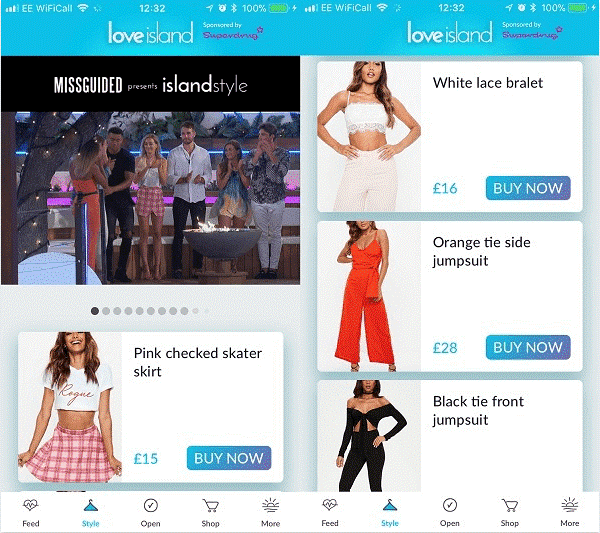
Here’s an example of relevant and easy placement. You’re on your computer streaming your favorite show and – in this moment – ads for the brand “Missguided” appears – offering relevant, related content. This clothing company’s advertising the same clothing women are wearing on the show you’re streaming. The brand’s realized that their target audience is often interested in this show, providing them the perfect moment to bring these outfits to your attention.
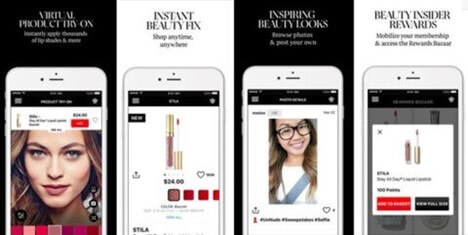
Another example? L’Oréal’s created a personalized mobile app called “Makeup Genius.” Within this app, when you take a picture of yourself, you receive customized makeup recommendations. These are rendered on the screen, and soon after, the app allows you to purchase the recommended makeup right from your phone. Here, L’Oréal both creates and takes advantage of these micro-moments of need.
In marketing, the name of the game is thinking ahead and being one step in front of your competitors and consumers. Micro-moments are all about showing up at the right time and place, with relevant and easy-to-digest information.
Interested in working micro-moments into your next digital marketing campaign? We are here to help! Contact us.
A Strata YouTube Channel Original
When building a multichannel marketing campaign, one of the first steps is to build a cost structure to set the direction of the project. If you don’t plan ahead, costs can add up quickly, so to help you out, our most recent YouTube video goes over the different costs behind a successful multichannel marketing campaign and how to make your next campaign both cost effective and impactful. Let’s go ahead and take a look at the first cost of a multichannel campaign.
Platform Cost (Managed Service Cost)
Picking a strong technology platform is a make-or-break decision that will determine how successful your multichannel campaign will be. Effective and coordinated multichannel marketing is only made possible through technology, so it’s essential you have access to it. A recent survey revealed that 52% of marketers utilize 3 to 4 marketing channels in one campaign, so the correct platform that can properly track and execute a campaign on many channels is imperative. If this is your first rodeo, pick a vendor to coordinate and manage these campaigns. Doing so will essentially convert the majority of the upfront costs to variable execution costs and will make the campaign easier to manage. Make sure the platform you choose properly aligns with your business strategy, as only 16% of marketers claim they have this alignment. Generally, your company should budget between $20k and $40k for a solid, multichannel-capable platform that will get the job done.
Want to learn about the two other costs associated with multichannel marketing campaigns? Click on the video below to hear from our Research & Development Director, Harrison. Or, if you’d like to discuss this concept with one of our multichannel experts, contact us today to get your next (or maybe your first) multichannel campaign up and running.
A Strata YouTube Channel Original
Choosing the right multichannel campaign provider can be difficult, especially if you don’t know exactly what you need. Come along as we walk you through a few things to keep in mind when making this decision and understanding what best fits your company’s wants and needs.
Research, Research, Research
When searching for a multichannel provider, make sure you’re choosing one that understands the size of your business, your budget, and your end goals, and one that has experience in every aspect of multichannel marketing, not just one. If you’re stuck, it can be helpful to ask yourself the following questions before getting started; What is the size of your industry? How have sales been? What goals does it make sense for your company to set? It’s important to define your business objectives before starting to search for a partner. At the end of the day, your team members are the only ones that truly know your company, so the more you provide these possible vendors and the more you research, the better.
Data Optimization
You know what they say… you’re only as good as your list. Partnering with someone that has the ability to enhance, enrich, and fill the gaps within your data is key. You don’t want a one size fits all approach, because each company is different. Without data, you’ll never know what’s working and what’s not. Crafting not only a list but a targeted list will make all the difference. That includes demographics, psychographics, behavioral, and B2B firmographic info. Considering 51% of companies today use at least eight channels to interact with customers, why wouldn’t you want to start using multichannel marketing?
Want to learn more about the other two components to consider when choosing your multichannel campaign vendor? Click on the video below and hear from our Marketing Manager, Caitlin. Or, if you’d like to discuss this concept with one of our multichannel experts, contact us today to get your next (or maybe your first) multichannel campaign started.
A Strata YouTube Channel Original
Throughout your workday, you might hear the term “Multichannel Marketing” being thrown around casually, and not have the slightest clue of what it’s referring to. That’s okay! We understand that it can sound like an intimidating subject. While up to 95% of marketers say they understand the importance of multichannel marketing for targeting, only 73% say they hjave a multichannel strategy set in place. At its core, Multichannel Marketing is a simple concept that can help your company’s overall marketing campaigns and execution excel. Read along as we walk you through this falsely intimidating marketing concept.
What is Multichannel Marketing?
In a nutshell, multichannel marketing is a strategy that uses a combination of indirect and direct communication channels. With these channels, you’re able to reach all of your clients, prospects, and customers with a multifaceted campaign that can do wonders for your company. Multichannel campaigns are all about distributing the right content to the right people at the right time. Whether it’s by direct mail, digital ads, social, websites, or brick and mortar stores, multichannel marketing can be anywhere and everywhere so that your customers can take action and respond to the channel of their choice. You basically open a window of endless communication possibilities, and let your customers respond on their own terms. There’s no forced communication, because the advertising experience is controlled by the pace of the customer.
98% of Americans switch between multiple devices in one day. If that statistic isn’t enough to make you believe in multichannel marketing’s power, then we don’t know what is. Traditional marketing tactics work, but multichannel marketing is unique because it meets customers where they are along their journey instead of at one single spot. For this reason, multichannel marketing is never a “one size fits all” approach. It requires marketing readiness on multiple channels, especially since 86% of shoppers regularly channel-hop across a minimum of two mediums.
Ready to Learn More?
If we’ve piqued your interest and you’re ready to enhance your multichannel marketing knowledge, check out our YouTube channel or click the video below. Our Marketing Manager, Caitlin, will give you a quick three-minute explanation on this ever-popular topic, or if you’d like to discuss this concept with one of our multichannel experts, contact us today to get your next (or maybe your first) multichannel campaign started.
7 Ideas for Your Digital Strategy
So far in the Power of Digital series, we’ve highlighted digital’s general power and presence in today’s world, and shared key tips and tricks to plan, execute, and get the most out of your digital marketing campaigns. This week, we’re shifting gears a bit to take you through 7 unique and effective ways you can use digital in your next marketing campaign.
1. Content Marketing
Content is key and king, and that will most likely never change. Especially on digital platforms, content can make or break your marketing campaign. Almost every channel can benefit from content marketing, but those that benefit most are websites, blogs, e-books, white papers and one pagers, infographics, online brochures, social media, and digital advertising. You can expect about 67% more leads every month if your brand has a blog (compared to those who don’t). Digital content marketing can help you get noticed, help customers find you, and build brand reputation – and high-quality content can make you a subject matter expert, thought leader, and front-runner in the industry. A good online presence created through valuable content can earn your audience’s trust and influence prospects to take action, especially if that content includes an effective call to action.
2. Social Media Marketing
As widely used digital marketing channels, social media platforms such as Facebook, Instagram, Twitter, and LinkedIn, can help you expand your digital audience and reach (and connect with) people in several areas of the internet. Social media is an excellent, easy, and often free way to promote your business through visual and valuable content that can be uploaded in seconds – whenever and from wherever. Like we said, social media is a great place to reach, interact with, and communicate with customers. It’s a place where customers know they can reach you quickly, get instant gratification, and grow to feel more personally connected to your company. Platforms like Facebook and Instagram are useful for sharing announcements, blogs, landing pages, and more, and all of this content can also be shared, liked, and commented on by your customers and interested prospects. In fact, 53.6% of the world’s population uses social media, so take advantage of the crowd.
3. Video Content & Advertising
If you’re not already taking advantage of advertising with online videos, the time to start is now. According to Optinmonster, video marketers get 66% more qualified leads per year. Video is an effective, memorable, and authentic way to share company messages. It can be inspirational, entertaining, thought provoking, surprising, educational – you name it. It’s a great way to tell a product story, make announcements, or show the faces behind a company. Just make sure when you’re making video content that you know your intentions. What do you want to tell your audience? What do you want to show them? How do you want them to feel? And maybe most importantly, what do you want them to do? The best channels to post your video content are YouTube, Facebook, Instagram, and Linkedin – but video content can be posted pretty much anywhere, and can be broken up and used on several different platforms to target audiences in different stages of the buyer’s journey and acquire varied results.
4. Audio Content
As consumers are settling into their new routines of life at home, consumption habits are dramatically shifting across digital mediums. Podcasts are all the rage these days, and for good reason. Businesses, influencers, and thought leaders have started to realize that no matter what someone’s schedule, while they may not have time to watch, they’ll often have time to listen. Whether it’s on the traditional radio or via a podcast, audio has become an extremely relevant medium to offer on-demand listening for your busy audiences. Even better…audio marketing can often be easier and cheaper to produce and distribute highly tailored content than other forms of marketing.
5. PPC Advertising & SEM
PPC (Pay Per Click), advertising and SEM (Search Engine Marketing) efforts can draw a ton of traffic to your website. PPC focuses on driving search traffic with direct commercial intent. Pay-per-click ads through the Search Network help ensure you’re fully visible and front and center on an SERP when users submit queries that are relevant to your brand offerings. This digital marketing tactic varies in its cost, because the advertiser pays the publisher depending on how often their ad is clicked. Yet, the more you pay, the more possible prospects you’re likely to get. This type of advertising’s a great way to show off your brand to individuals who are actively looking for products and solutions that your brand has to offer. 65% of B2B companies have acquired customers through LinkedIn ads alone, just one of many places these advertising opportunities exist.
6. Digital Display Advertising
This subset of SEM efforts is also a great way to reach new customers using text, images, banners, rich media, interactive imagery, and video. Digital display advertising presents you with the opportunity to showcase your brand in a wide variety of ad formats. Display advertising is an excellent way to build brand awareness and get clicks, conversions, and sales from users who have an interest in your business and have found your display ads to be relevant to the solution or product they’re searching for. Digital display ad messaging can be easily customized based on your customer’s interests and shopping behaviors, but before getting into display advertising, make sure you choose an expert to work with to get the most out of your efforts and obtain higher ROI.
7. SEO
Lastly, SEO is a good digital focus for your company to have if you’re looking to increase organic search rankings for your website. The higher your pages rank on Google’s SERP, the better chance you have of growing your business and brand awareness. Having a high ranking also builds consumer trust and company credibility, and betters user experience, making it more likely for customers to become repeat buyers. The mediums that most profit from SEO auditing include websites, blogs, and infographics, but almost every channel can benefit from improved SEO.
Ready to enhance your next digital campaign? Contact us. We’ll help you brainstorm and execute, and make sure you get the most ROI for your digital marketing efforts.
Make Your Direct Mail Thrive with Tracking, Enhancing, and Attributing Results
We’ve said it time and again – direct mail really works. In fact, direct mail open rates can reach up to 42%, which is a lot higher than most e-mail open rates. Recipients of direct mail also “purchase 28% more items and spend 28% more money than people who don’t get that same piece of direct mail.” While these are excellent stats, we know it’s not always that easy to track and measure ROI from physical mail in the same way you track ROI from your digital strategies. Don’t worry, we’re here to help you out. We believe in not only the importance of direct mail, but in its results – with the right tools and resources.
Be Consistent
First and foremost, consistency is key when it comes to direct mail ROI. To get the most out of your direct mail, make sure it isn’t just direct mail. What do we mean? Weave digital touches into your direct mail – like your social media, digital ads, and website – and make sure everything is connected. With the right direct mail partner or resource, you can take mailing addresses and match them with social accounts, IP addresses, and more to really understand who your audience is and what actions they’re taking. Weaving in digital information can help you share your message before, during, and after your direct mail is sent out – making the chosen brand message consistent and more impactful to your audience.
Not convinced this is all necessary? We are, because combining offline and online tactics is proven to really work. In a recent study, a whapping 68% of marketing respondents saw that combining digital and direct mail increased visits to their websites. Considering the multichannel experience and the customer journey while creating your direct mail will not just increase website visits, but many areas of ROI.
Track
When it comes to getting the most from your direct mail, it’s important to ABT – Always Be Tracking. Not only tracking information and results from your direct mail campaign like you would your digital ones, but tracking the delivery of your mailers – just like you would a package. This will help you know when to prepare the recipient with other messaging before delivery, and when to follow up with them to make the greatest impact. Take it a step further by working with your direct mail partner or resource to send the recipient an “informed delivery” message by USPS to make them aware of their mailer’s arrival, and send them direct links to ROI-rich landing pages. If you haven’t noticed already, every step we’re highlighting truly combines the traditional and digital worlds of marketing.
Attribute Results
If you’re still with us, you’ll see that we’ve created an experience for the recipient along many steps of their customer journey, tracked their direct mail’s physical journey, and have notified them that there’s a special something waiting in their mailbox. So, what’s next? Reporting, recording, and attributing. Without these, you won’t know how to improve upon your direct mail and increase your ROI for next time. Your recipients may respond or perform an action by phone, BRC, personalized landing page (PURL), or in another way, so it’s important that the information is correctly recorded in real-time. The best way to record and store this information is on a platform’s dashboard specifically made for tracking. There are many out there – so find whatever works for you and make sure you use it to your advantage. The chosen platform can help you store names, addresses, ages, and other helpful demographics to assist you in understanding and targeting your true target audience.
You may have some recipients who will visit your website but will not directly respond to your mail. That’s why it’s important to use identifiable URLs that you can easily track, like UTMs, PURLS, or specified QR codes. If these recipients aren’t quite ready to reach back out to you or make a move, you’ll still have a gauge on their interest, and will be able to send them digital ads or e-mails reminding them of your product or service until their ready to take the next step.
Stop Wondering
Instead of continuing to throw mail like paper planes to your audience, track and know if your mailers make an impact. Make sure you’re always examining your data and attributing it. You’ll quickly realize it’s easier than you expected to see what’s working, what’s not, and where you can improve on your direct mail campaigns.
As one of our specialties at Strata, we know that direct mail can be uber effective when using the right processes and tools. The key is always combining traditional and digital to catch your audience’s attention before, during, and after direct mail is in their hands. And, like we said before, never stop tracking and modifying.
To learn more about how to create successful direct mail, check out our direct-mail-focused blogs, “Dimensional Mail: Four Criteria for the Perfect Promotional Item” and “7 Ways to Make Your Postcard Stand Out”, or simply contact Strata. We’ve been doing this for years and would be happy to help you get an ROI rich direct mail campaign started.
An Intro to Omnichannel Marketing
What is Omnichannel Marketing Anyway?
In the past, before the great omnichannel marketing came about, many businesses solely relied on one-touch marketing campaigns that would die upon completion. They’d send out one piece of direct mail – one digital ad – one email – and expect a plethora of results. Whatever the trend of the moment was, that’s what they’d focus on, and only that.
Omnichannel marketing is “a cross-channel content strategy used to improve the customer experience and drive better relationships across all possible channels and touchpoints.” It takes all of the most relevant trends combined with multiple marketing touches to reach people how, when, and where they are, and provide them with the best customer experience, whether that experience be point-of-sale, digital, or physical. It meets customers where they are in the buyer journey with unified and steady messaging, instead of at a stop along the way.
At the end of the day, omnichannel marketing is all about driving better relationships – and targeting prospects and customers with the right messages, in the right places, at the right times.
Multichannel vs. Omnichannel
These sound very similar, and although they’re both great trends and important marketing tactics, they’re not one and the same. While omnichannel marketing, like we said above, is multiple marketing touches along the buyer’s journey, creating unified and steady messaging, multichannel marketing is interacting with potential customers on various platforms – but not necessarily messaging that’s tied together seamlessly and consistently. Multichannel marketing could mean you’re using print ads, retail locations, a website, promotional events, product packaging, and WOMM, but they may not all convey the same communication.
Here’s a trick to easily remember the difference:
- Multi means many (simply enabling each touch point), and casting the widest net to connect with the most customers
- Onmi means all (all touchpoints convey the same message to all customers), which focuses on building stronger relationships between consumers and brands
The Importance of Omnichannel
Omnichannel marketing can be great for many aspects of your business. Like we said, it can and will, if used correctly, attract the right people, at the right place, at the right time. In the digital age of 2021, it’s more important than ever to utilize technology to accurately find and target these recipients. Use omnichannel marketing to do the following for your company…
- Boost customer loyalty: Ensuring consistent messaging across all platforms, and going further to offer personalized experiences for each audience member, creates a better brand image and increases customer satisfaction
- Improve brand recall: Making sure your brand is represented in the same way across platforms and devices can produce better customer recollection
- Increase revenue: Content personalization, WOM marketing, and again, consistent messaging, can help retain and attract new customers
- Utilize purchasing patterns: 73% of shoppers use multiple channels during their purchasing journey, so capture your current audience and expand your content to reach a broader scope of your customers
Example of Omnichannel Marketing
To help you better understand how omnichannel marketing works, we’ve put together an example of omnichannel touchpoints along the customer journey, below:
Customer receiving text message about sales promo while in store -> Customer receiving an empty cart email at checkout -> Customer receiving retargeting digital and/or print ad
How to Get Started
Before jumping in and creating the marketing touchpoints of an omnichannel campaign, think about the customer first. Review all of your current touchpoints, and evaluate whether they provide a positive, consistent, and branded experience. Get to know your customer base even better by developing buyer personas and understanding their needs, wants, behaviors, demographics, preferences, goals, and more. Lastly, do a ton of tracking and research, hire the right guru, or choose the right partners to get going. Here at Strata we have data providers, digital advertising specialists, direct mail experts, and analytics and reporting professionals, all on staff and ready to help you – taking the guess work out of the entire process.
Still not sold? How about these statistics…brands experience a 287% higher purchase rate when using three or more channels, and companies with well-defined omnichannel customer experience strategies in place achieve a 91% higher year-over-year increase in customer retention rate on average.
Don’t wait to take advantage of what Omnichannel Campaign Marketing can do for your business. Click here to see how we can help.



